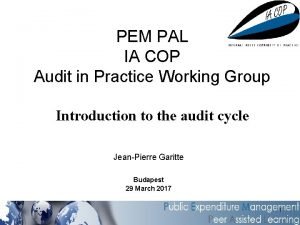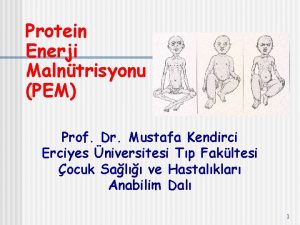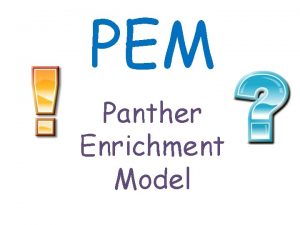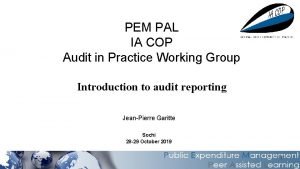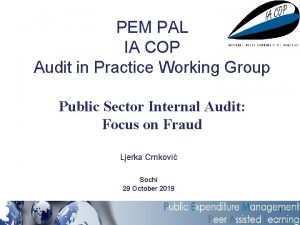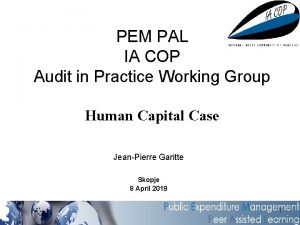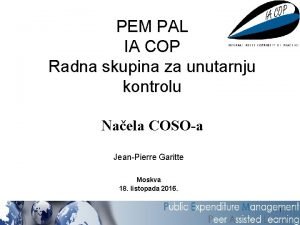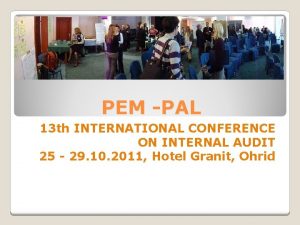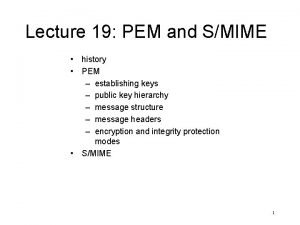PEM PAL IA COP Internal Control Working Group










- Slides: 10

PEM PAL IA COP Internal Control Working Group Introduction to PIC Terminology Jean-Pierre Garitte Moscow 18 October 2016 1

Objectives of PIC A Public Internal Control System can provide assurance that governments funds are being spent wisely. PIC represents a structured model that provides reasonable assurance that operations comply with the principles of sound financial management, transparency, efficiency and effectiveness, whilst respecting relevant laws and regulations. 2

The 3 Fundamentals of PIC 1. Managerial accountability = Financial Management and Control (FMC) 2. Functionally independent internal audit 3. Central Harmonization Unit (CHU) 3

Managerial accountability (FMC) • Managers at all levels are accountable for the activities that they carry out. • First level of control should be at the level of the manager. • Each manager is responsible for establishing and maintaining adequate managing and control systems to carry out the tasks of planning, programming, budgeting, accounting, controlling, reporting, archiving and monitoring. • Risk assessment is a task to be carried out by management. 4

Functionally independent audit • Budget and spending centers equipped with independent internal audit. • Internal audit will support management with objective assessments of the internal control system. • Auditors report directly to the top manager in the hierarchy. • Role of internal audit is formally outlined in a charter, to be signed by management and internal audit. • Internal auditors must comply with Code of Ethics. • Internal audit is not involved with managerial tasks. • Internal audit does not sanction or punish. • Internal audit is different from inspection and revision. 5

Central Harmonization Unit (CHU) • A central structure to manage the development of PIC. • CHU is responsible for promoting and developing internal control and internal audit, based on international standards and best practices. • CHU coordinates gap analysis and policy development. • CHU coordinates implementation of relevant legislation. • CHU is best placed in Ministry of Finance. – CHU for IA within Ministry of Finance – CHU for FMC within Treasury or Budget 6

Central Harmonization Unit (CHU) • Within Ministry of Finance CHU is different from Internal Audit unit. • CHU does not audit Internal Audit. • CHU can coordinate training activities for FMC and IA (development of curricula). • Grant title of ‘Public Internal Auditor’. • CHU monitors PIC implementation. • CHU may evolve to Center of Excellence. 7

External audit • PIC system subject to independent assessment by Supreme Audit Institution (SAI). 8

The Three Lines of Defense Model (as conceived by the ECIIA & FERMA in Guidance on the 8 th EU Company Law and endorsed in the so-named Position Paper issued by The IIA in Jan. 2013) 9

Questions & Answers 10
